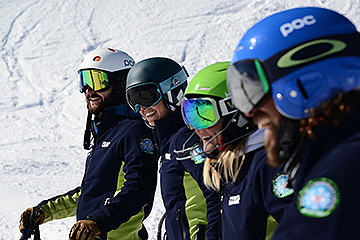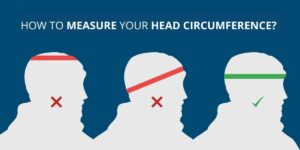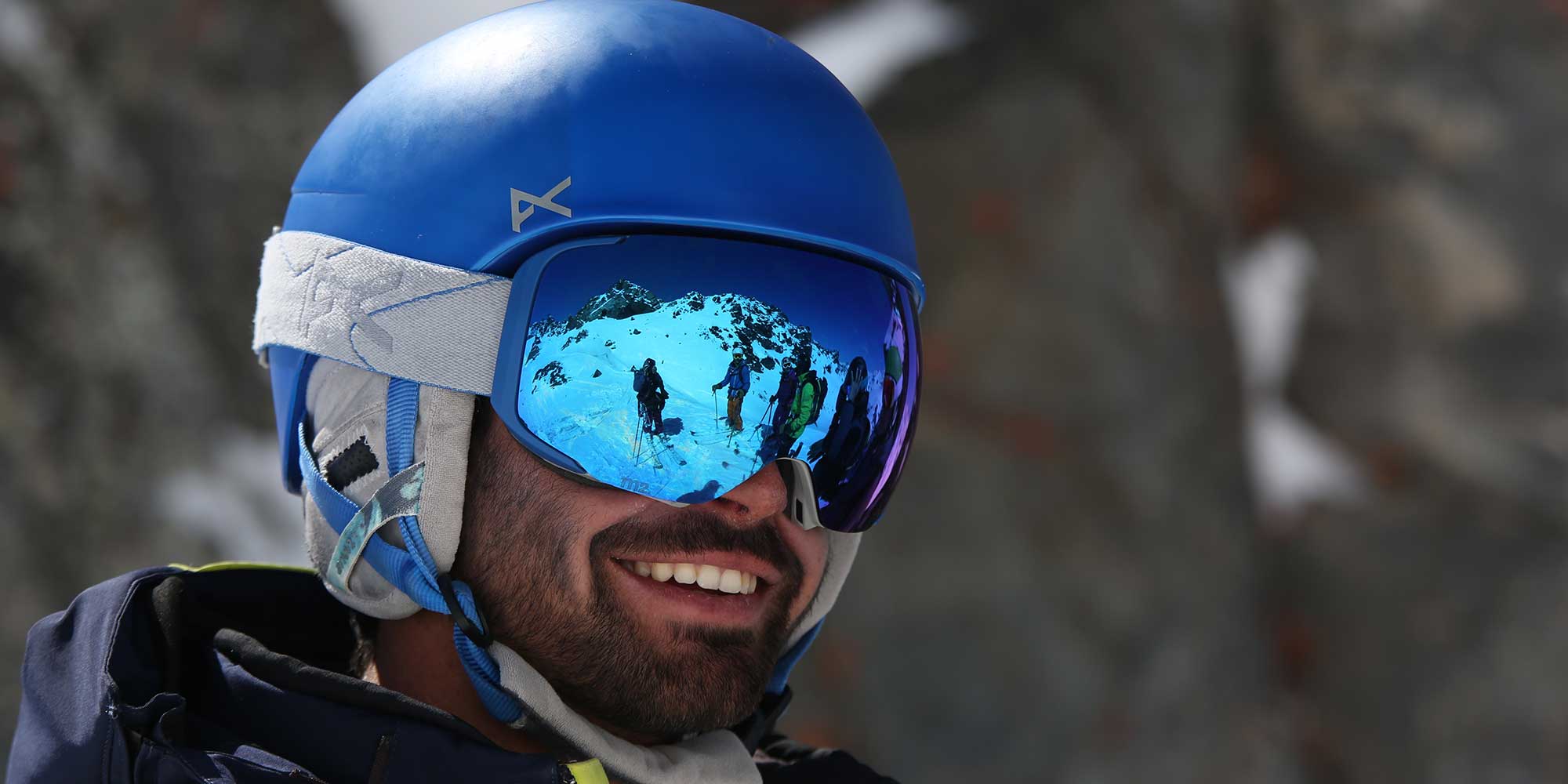Choose Your
Ski Helmet

We wear a helmet when we go off-piste skiing because we consider it to be dangerous. But with slopes groomed almost to perfection we tend to fly down faster than we would in the fresh powder, making it almost more dangerous than any off-piste adventure. Time to invest in your safety!
What size helmet do I need?

Use a measuring tape to know exactly what size helmet you need. Put the measuring tape around your head horizontally more or less at the height of your eyebrows. Don’t keep it any higher up or you’ll only measure the crown of your head, and make sure not to pull it down to your neck at the back of your head.
Once you know your measurements you can choose a helmet. Ideally you go for a helmet with a sizing wheel at the back, allowing you to tighten or loosen it around your head.
Ventilation or not?
The best choice is always a compromise between both…The middle ground is a helmet with ventilation you can open or close as you wish depending on the weather conditions. This allows you to open the vents and let air circulate on those warmer end of season days or when you go skiing in lower resorts. Or on the contrary, batten down the hatches and keep your head dry and warm when you’re looking for higher ground or skiing on a glacier.
Moreover, did you know a person loses 7 to 10% of their body heat through their head…? At sub zero temperatures this is definitely another good reason for wearing a helmet!
Helmet standards
All helmets have to be conform to official european safety standards. The European norm EN 1077 sets the standards for al wintersports and ski helmets and defines two kinds of helmets:
- Class A helmets, providing full head coverage (including the sides and ears). These helmets can withstand an impact from twice the height of a class B helmet and are thus mandatory during competitions.
- Class B helmets, offering better ventilation and better hearing but with a lesser degree of protection. These helmets are thus typically used for recreational use.
Helmet construction and design
Hard shell helmets
The hard shell construction is the more classic type of helmet construction. We can perfectly distinguish where the hard outer shell ends and the inner styrofoam layer begins. The outer shell is made of ABS plastic, which is very shock resistant, hard and durable, but easy to mould at the same time. Styrofoam on the other hand is a great insulator and a good shock absorber, making for an excellent helmet inner layer.
Pros: because of the durable materials used these helmets last. Provided they don’t endure any considerable shocks or falls you can keep them for several years.
Cons: These durable materials are also slightly heavier, which means these helmets are definitely not the lightest available on the market today. They are also a less efficient in terms of ventilation, as styrofoam is a strong insulator.
In-mold helmets
Contrary to hard shell helmets there is no visual indicator that shows the difference between inner and outer layers on these helmets. Both layers have effectively been “moulded” together, allowing for a lighter construction. The outer layer is made out of polycarbonate, which is then moulded together with EPS or Expandable Polystyrene. This material is very lightweight and yet extremely resistant to impact. As the layers are thinner and moulded together these helmets are also easier to ventilate.
Pros: lightweigth and easy to ventilate
Cons: higher range helmets, so in general slightly more expensive
Hybrid helmets
As the title suggests, hybrid helmets are a combination of both types of helmets. All materials mentionned above used in the right places for a maximum of shock resistance, insulation and ventilation.
Pros: the best of both worlds in terms of weight and durability
Cons: the best of both worlds also suggests a higher price range
With or without visor
Whether or not you get a helmet with a visor really is just a question of whether or not you like the look or not. The quality and luminosity of the screens is the same as those of regular ski goggles, and you will have a choice of categories. Often you will even be able to purchase a second visor of a different category so you can change according to the weather conditions. This of course depending on which brand you choose. On a whole getting a hemet with a visor means you don’t have to purchase goggles seperately, but your helmet will of course be slightly more expensive as your goggle is just incorporated.
Last but not least…
We strongly advise changing your helmet every 5 years even if you have not experienced any impact at all. The materials used in their construction deteriorate with time. Such is the case with the expandable polystyrene on the inside of your helmet for example. With time it’s ability to absorb shocks decreases. So to be on the safeside it’s always better to change on a regular basis (5 years minimum).



